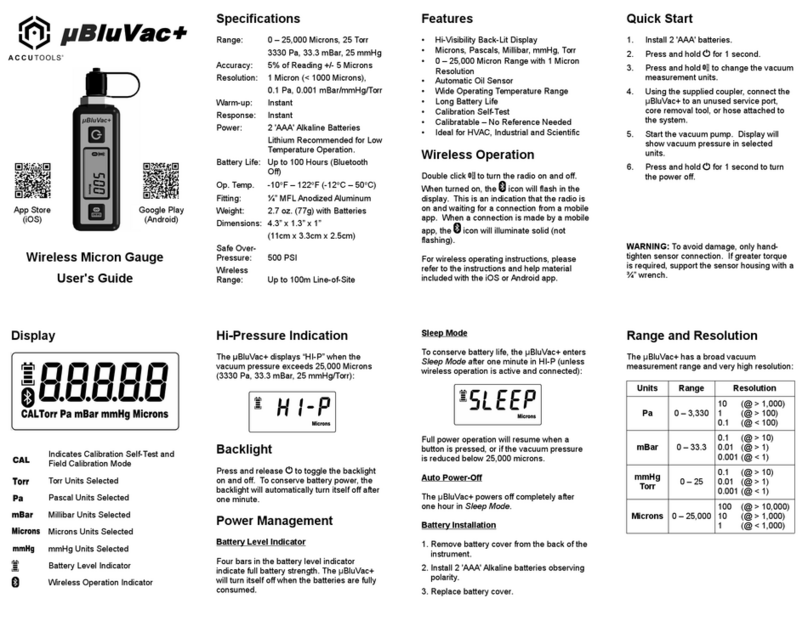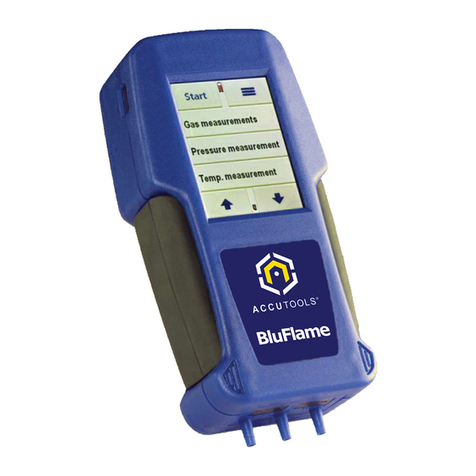
BluVac LTE User’s Guide
8
Calibration Test
The BluVac LTE should rarely require recalibration, though it may be necessary to know that your
gauge is calibrated properly for full accuracy. The Calibration Test mode assures you that the
LTE is calibrated to factory specifications. Test the calibration as follows:
1. Turn the BluVac LTE power off.
2. Important: Expose the BluVac LTE to atmospheric pressure.
3. Press and hold (do not release) the key for about 5 seconds.
4. The display will show if the instrument is calibrated properly.
5. The display will show if the instrument requires calibration. Please see the
Calibration section below.
Calibration
If the Calibration Test indicates recalibration is required, the gauge may be recalibrated. Unlike any
other vacuum gauge, the BluVac LTE can be easily recalibrated to factory specifications without any
special equipment, with the following procedure:
1. For best results, clean the sensor with alcohol prior to calibration. Ensure the sensor is
completely dry before proceeding.
2. Turn the BluVac LTE power off. If necessary, install a fully charged battery into the gauge.
3. Place the dust cap over the vacuum fitting.
4. Hold while pressing . As soon as the power turns on, release and and then
press quickly at least three times. The CAL indicator should illuminate, and
should show on the Main Numeric Display. If not, turn the power off again and repeat.
5. Place the BluVac LTE in a clear Ziploc (resealable zipper storage) bag, press out any extra air,
and seal.
6. Place the bagged BluVac LTE into a freezer with a temperature of less than –5°C (23°F).
7. Allow the BluVac LTE to cool to below -2°C (28.4°F). At this point, the alarm will sound and the
display will change to .
8. Remove from freezer and press any key to silence the alarm.
9. Place the BluVac LTE undisturbed in an area with a room temperature of at least 23°C (73.4°F)
but no greater than 30°C (86°F).
10. Allow the BluVac LTE to warm to 20°C (68°F). At this point, the alarm will sound, and
will show on the display.
11. Press any key to silence the alarm. The BluVac LTE is now calibrated to factory specifications.
NOTE: For accurate calibration, it is necessary to allow the BluVac LTE to warm slowly. Attempting
to accelerate the warming by using a heat source will not provide satisfactory results. During the
cooling/warming process, the temperature will be indicated on the Alternate Numeric Display in
degrees Celsius. The calibration process may be canceled at any time by turning off the BluVac LTE
The previous calibration will be unchanged.





























